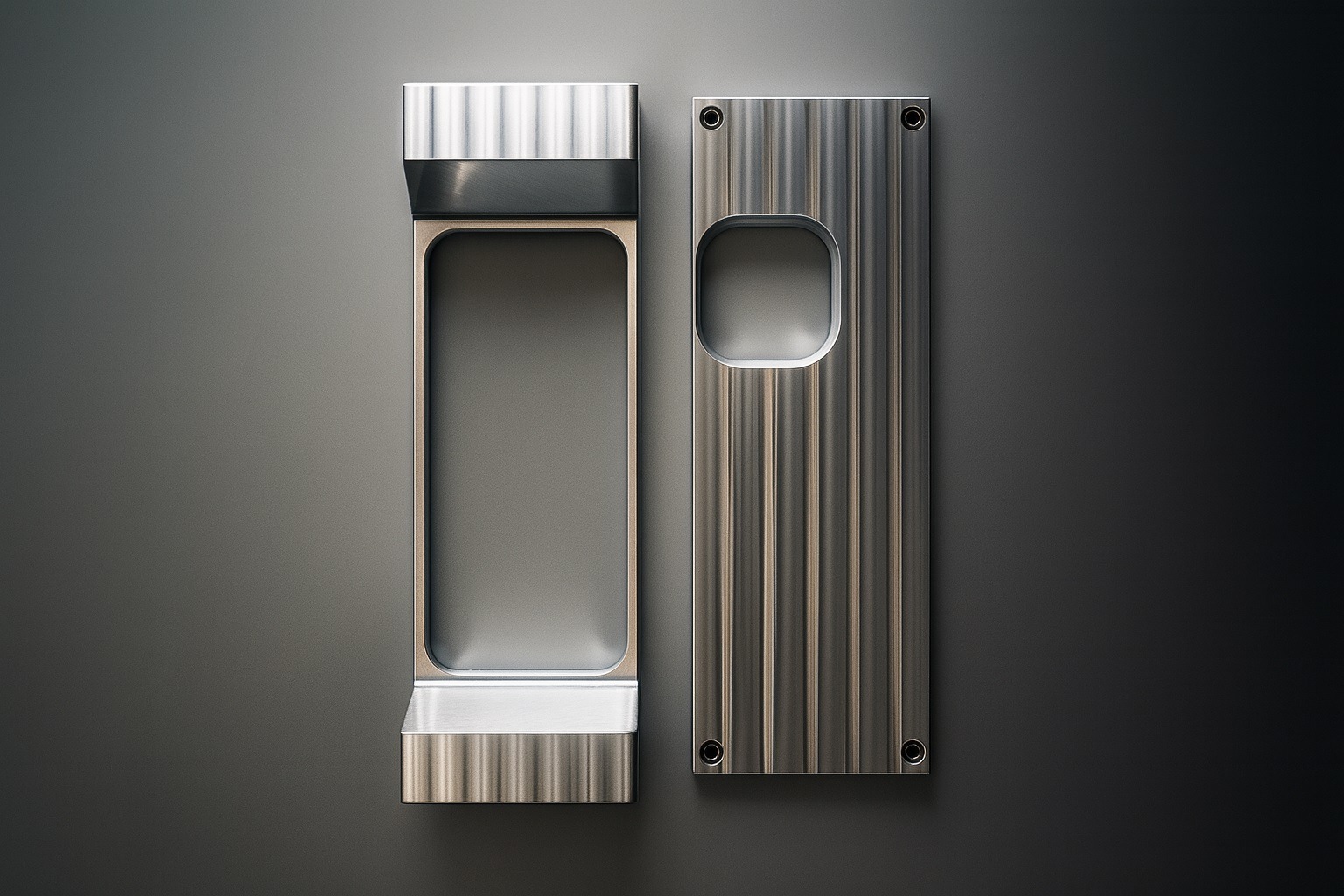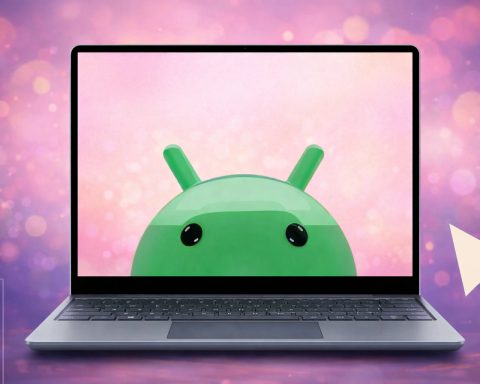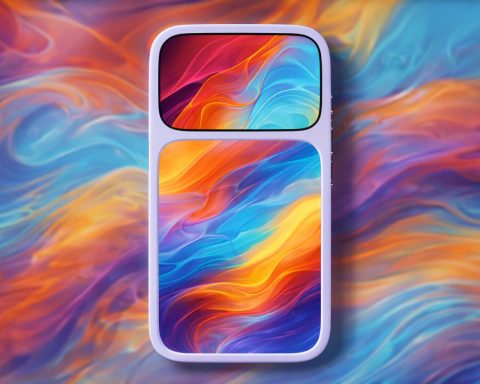- Tech gadget: A 6-pound (2.7 kg) solid-steel iPhone case is making headlines. It turns an iPhone into a literal “brick” (inspired by 1980s mobile phones) that’s almost impossible to scroll through. [1] [2]
- Viral hit: Videos of the case have gone viral – one got ~430,000 likes on Instagram in 10 days and nearly 7 million views across social media [3]. Its creator, neuroscientist Logan Ivey, says it cut his screen time in half (from about 4½ hours/week to 2 hours/week) [4].
- DIY vs purchase: Originally a DIY hack (a dumbbell taped to a phone), the design is now a real product. A Kickstarter campaign (87 backers so far) has raised about $13,500 of a $75,000 goal, offering the case for roughly $209–210 each [5] [6]. Each unit costs ~$190 to machine and ship, so the price is basically “at cost” [7].
- How it works: The case screws together around the phone and can only be removed with an Allen wrench – you can still use all phone functions, but everything becomes physically harder. It won’t fit in a pocket (you must carry it like a laptop), and a single video call or “doomscrolling” session can exhaust your arms. As one report notes, “holding a six-pound…phone is exhausting. Your hands get tired long before your brain does, creating a physical feedback loop” that forces you to put it down [8].
- Screen-time context: Smartphone addiction is a growing concern. Studies show heavy phone use is linked to anxiety, depression, poor sleep and other health issues [9] [10]. Experts note that apps and built-in timers can help but are easy to bypass. By contrast, this case makes every tap and swipe a workout. In fact, users report significant drops in screen time once they start using it, simply because the phone becomes too heavy to hold for long [11] [12].
- Mixed reactions: Fans call it ingenious (it literally forces a break); skeptics call it a gimmick – “a $200+ solution to a problem that could be solved with… self-control,” as one tech editor quipped [13]. Either way, the conversation it’s sparking is real: people and even governments are increasingly aware of the need to dial back digital addiction [14] [15].
Heavy Case, Big Idea
The “6-Pound Phone Case” is exactly what it sounds like: a heavy stainless-steel cover for an iPhone. It was designed by Logan Ivey and his colleagues at Matter Neuroscience (a startup focused on the neuroscience of wellbeing). Ivey explains he tried everything – flip phones, app blockers, timed lock boxes – but none worked for him. Finally he asked himself, “How can I keep all the functionality of my phone, but still use it less?” [16]. The answer: make the phone really heavy and inconvenient to use [17] [18].
The result is a blocky steel case reminiscent of old ‘brick’ mobile phones. It adds 6 pounds (≈2.7 kg) to the device – heavier than many laptops [19] – and encloses the phone in two screwed-together halves. There are cutouts for the port, buttons and camera, but to open it you need an Allen key. As NotebookCheck’s tech writer puts it, the heavy weight was “intended to make using the smartphone so tedious that users no longer scroll… for hours” [20]. In short, using the phone becomes a workout.
Matter Neuroscience itself describes the logic this way: “At 6 pounds, your hands and arms physically get tired while using it. That fatigue reminds you to put the phone down,” according to the Kickstarter page [21]. Indeed, users say even checking one text feels like lifting a small dumbbell. Because the case can’t be popped off instantly, you’re unlikely to slip back into obsessive scrolling. You must use a bag or backpack to carry it – no quick pocket moments. And if you leave the phone behind (because of its bulk), you may even see fewer “phantom notification” checks.
From Prototype to Kickstarter
Ivey first tried the idea as a joke: he taped a dumbbell to his phone case. To his surprise, his screen time plunged. Fast Company reports he went from “four and a half hours per week to just two” after using the prototype [22] [23]. Energized by the result, he refined the design with Matter Neuroscience’s team and launched a Kickstarter on Oct. 21, 2025.
That project has quickly gained attention. Tech blogs and influencers have amplified it. In a matter of days a Matter Neuroscience Instagram post showed the metal phone case and racked up 430,000 likes in 10 days [24] [25]. Videos demoing the case’s heft have gone viral (millions of views across YouTube, Instagram, TikTok, etc.) and generated press coverage worldwide. (Even tech-focused outlets like Android Authority and BGR covered it as soon as the Kickstarter went live [26] [27].)
As of late October 2025, the campaign has about 87 backers and ~$13,500 pledged toward the $75,000 goal [28]. The base reward – one 6-pound case + sticker – is priced at $210. This is not a profit product; the builders say that’s essentially the break-even cost (machine work, shipping, and import taxes) [29]. There’s even a brass upgrade version for $500. (For comparison, a typical plastic iPhone case costs under $30.) Backers are mostly early adopters and people fascinated by the gadget – or desperate for help quitting their phones.
Phones as Tools, Not Traps
The 6-pound case is part of a broader conversation about digital wellness. Smartphones today are engineered to keep us hooked. Endless feeds and notifications release dopamine hits that can be hard to resist. In 2025 alone, surveys suggest billions feel anxious when separated from their phones, and heavy screen users report more anxiety, depression, and sleep problems [30] [31]. Psychologists warn that overuse can damage posture, eyesight, focus, and even mental health.
Typical remedies include app timers, “do not disturb” modes, and — for extreme cases — locking the phone in timed boxes. But all those solutions depend on your willpower (or software that you can easily disable). In contrast, the heavy case forces the break by physics. As one journalist noted, it “literally turns your smartphone into a dumbbell,” and “[makes] every interaction a whole lot more work” [32] [33]. Put simply, your arms give out before your brain does.
Supporters argue this approach helps “make the phone a tool again, instead of a trap,” in Ivey’s words [34]. Indeed, he says by making the device cumbersome, he broke many of those automatic habits. “Those little moments… where you instinctively reach for your phone, I don’t do anymore,” Ivey told GovTech – because either he’s not carrying it, or “it’s too heavy.” [35]. This is the crux of the idea: even a slight resistance can snap you out of the trance of doomscrolling.
Global Response to Screen Addiction
Smartphone addiction isn’t just a fad concern. It’s attracting serious attention worldwide. For example, a new CDC study found that U.S. teens with high daily screen time (4+ hours beyond schoolwork) are much more likely to have depression or anxiety symptoms, irregular sleep, and low social support [36]. Japan’s government is so worried that it coined the term “smartphone dementia” for memory problems caused by information overload [37]. In Oct. 2025 Tokyo even opened a clinic to treat this syndrome [38].
Across the globe, schools and regulators are taking steps. Finland and other countries have banned phones in classrooms; Paris and other cities plan to do so. South Korea is readying similar rules by March 2026 [39]. Clinics and municipalities are running public-awareness campaigns and workshops on digital detox.
In this context, the 6-pound case is a quirky symbol of a larger movement. It highlights how pain or friction can change habits when mere apps can’t. As the World Economic Forum notes, long screen use is linked to “impaired vision, sleep disorders and adverse effects on brain development and concentration” [40]. It’s prompting tech companies too: new phone software and wearables are being developed to nudge people off screens.
Success… or Silly Gimmick?
Reactions to the case are mixed. Admirers call it a clever hack: one iPhone 17 owner pledged “to get my high score on doomscrolling achievements to go even lower” with it. Many praise it as a physical barrier that online tools can never replicate. Others are skeptical. Social media is full of jokes (“just bring a kettlebell!”, etc.) and some experts say it’s basically an expensive placebo. “The Good: It works… The Bad: It’s a $200+ solution to a problem that could be solved with self-control,” noted one tech editor [41].
No mainstream psychologist has endorsed the case specifically – but the underlying concern is real. Clinicians say that any strategy breaking the cycle of instant reward can help. This might be a stunt, or it might inspire less extreme interventions. Either way, it’s sparked a conversation. As one news story sums up: smartphone addiction “sounds dumb, but we think it’s actually a solution” [42].
Only time will tell if the 6-pound case goes beyond viral gimmick. But in a world where so many of us feel helplessly glued to our screens, even a bit of extra weight can be a welcome reminder: sometimes, to move forward online, you need to put something down – even if it’s 6 pounds of steel.
Sources: Coverage of the 6-Pound Phone Case and smartphone addiction trends from Matter Neuroscience, BGR.com, Android Authority, Fast Company, KnowTechie, NotebookCheck, CDC, World Economic Forum and others [43] [44] [45] [46] [47].
References
1. www.notebookcheck.net, 2. www.bgr.com, 3. knowtechie.com, 4. www.govtech.com, 5. knowtechie.com, 6. www.notebookcheck.net, 7. www.notebookcheck.net, 8. www.androidauthority.com, 9. www.cdc.gov, 10. www.weforum.org, 11. knowtechie.com, 12. www.fastcompany.com, 13. knowtechie.com, 14. www.weforum.org, 15. www.weforum.org, 16. www.govtech.com, 17. www.govtech.com, 18. www.notebookcheck.net, 19. www.notebookcheck.net, 20. www.notebookcheck.net, 21. www.fastcompany.com, 22. www.govtech.com, 23. www.fastcompany.com, 24. knowtechie.com, 25. www.bgr.com, 26. www.bgr.com, 27. www.androidauthority.com, 28. knowtechie.com, 29. www.notebookcheck.net, 30. www.cdc.gov, 31. sqmagazine.co.uk, 32. www.techeblog.com, 33. www.androidauthority.com, 34. supercarblondie.com, 35. www.govtech.com, 36. www.cdc.gov, 37. www.weforum.org, 38. www.weforum.org, 39. www.weforum.org, 40. www.weforum.org, 41. knowtechie.com, 42. www.bgr.com, 43. www.bgr.com, 44. www.androidauthority.com, 45. knowtechie.com, 46. www.cdc.gov, 47. www.weforum.org



